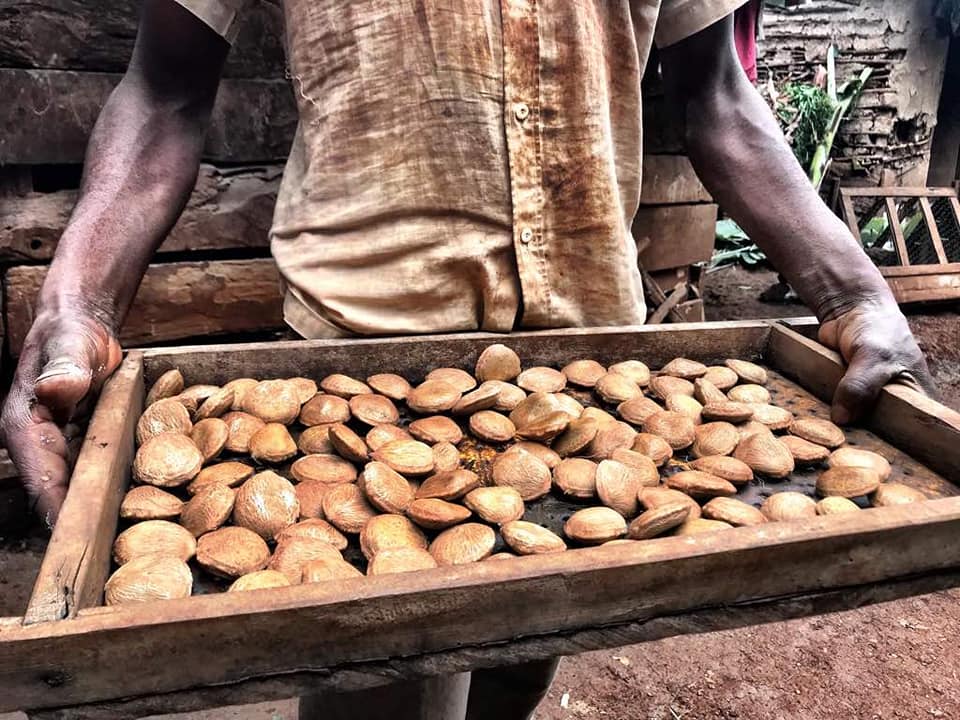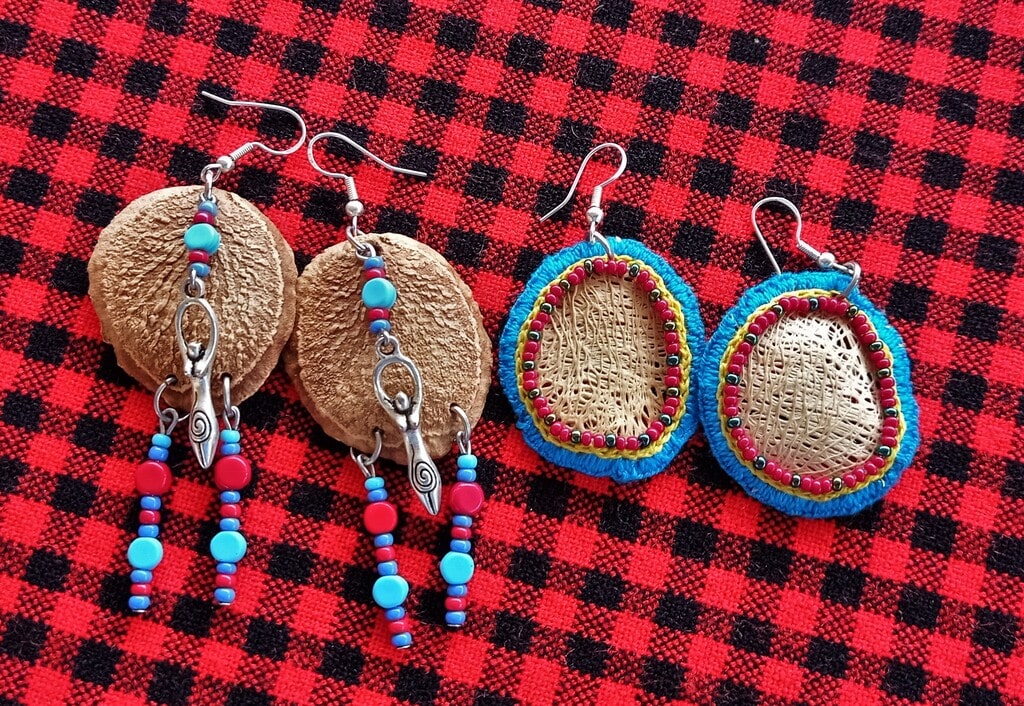Paradise is here

The Chagga tribe living on the slopes of the Kilimanjaro, enjoy the nutritional abundance that the fertile soil of the mountain grants them. It’s not for nothing that they call the mountain their paradise.
Tropical forestry, rich vegetation, plenty of water flowing down from the snowy mountain peak, and volcanic red soil from which everything grows easily.
Besides the agricultural crops, the mountain is abundant with fruits and vegetables that grow wild, many of them unique to the area. These are the heritage foods that have nourished the ancestors of the Chagga tribe for centuries.
The oyster nuts – Kweme in the Swahili language – were used in many ways. These nuts are the ultimate super food. Rich in protein, tasty and nutritious.
Traditional uses of Kweme

Here are some ways nuts have been used in the past by the Chagga people:
🍃 The nut helps a woman get stronger after giving birth.
🍃 It’s rich in proteins and helps fractured bones to heal.
🍃 Cooking oil was produced from the nuts.
🍃 The nuts were used in a variety of dishes.
🍃 🍃 🍃
And when grandma was cooking in the kitchen and telling the children stories, she would roast the nuts on the fire until they cracked open
like an oyster, and then served the delicious snack to the kids.



The comeback of Kweme nuts

The oyster nuts, Kweme, originate from Kilimanjaro and northern Tanzania (and Mozambique). For centuries they remained an important part of the Chagga people heritage foods.
Unfortunately, as more and more new crops were introduced in Tanzania, and with the arrival of industrial oil in the markets, the nuts all but disappeared from the Chagga family farms…
In the village of Shimbwe, the unique nuts are making a blessed comeback thanks to a local permaculture project.

Oyster nut seedlings are given to neighbors throughout the village. Within two years the climbing plant already bears its first fruit, and continues to produce fruit for almost twenty years!
Victor telling about his days in his beloved grandma kitchen, and shows us how to roast the kweme nut on open fire.
Win win
Nowadays, the nuts can generate good value in the local and international markets, both as a super food, and for use in the cosmetics industry.

🍃 And so the mountain got his oyster nut plants back, and his people were reminded of the nuts nutritious richness.
and also…
🍃 They gained another source of livelihood in the post-colonial era where peoples who lived off the abundance of the land, are no longer able to exist without modern day money bills.
and also…
🍃 The Kweme plant stretches its vines high up forest trees, that are being, more often than before, cut down for timber. It’s hard to resist selling a tree that grows on your land, knowing it will yield hundreds of dollars. But it’s a different story all together if the same tree is hosting the Kweme climbing plant. The annual return from the sale of the nuts exceeds the one-time profit from cutting down the tree and selling it.
In short, win-win-win in all directions.
My Kweme art project
A new project began when one day I stepped into the kitchen of the guesthouse that became my home. The chef had just finished cracking the oyster nuts for his famous sauce. The shells that were still scattered on the counter caught my attention, and I was immediately wowed by their rich texture.

The artist that I am immediately announced:
Earrings!
I got to work, and so, in a magical way that I couldn’t have planned, I brought to the mountain another use for the Kweme…
But this was just the beginning of a new beautiful story.
Read all about it here…

More beautiful Kweme earrings created by Baraka Kinyaiya.























Wonderful page. I have been motivated to start a kweme reviving project in Morogoro, Tanzania
Good luck!
My daughter took 2 of this nut to me from Uganda. It tasted sooo good even without it been roasted. I planted one and it has begun to sprout its way upwards. I am excited to have a piece of my ‘Mother’ country growing in my backyard in 🇯🇲 Jamaica.
Wonderful! Thanks for sharing.
Wow that’s amazing
I agree 🙂
Well it’s good 👍 about oyster nuts,but can i get the seed.?
Thank you. Checkout the rest of my blog, you will realize I’m not a seller 🙂